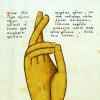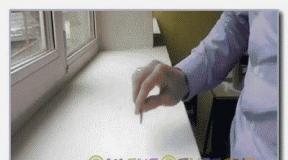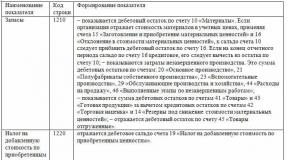Everything for you - Beats for beatboxing. Instructions for reading beatbox Beatbox tests
So, Beatboxer!
Classic Kick (b), Closed Hi-hat (t), Classic Puff Snare (pf).
You can find all these and other sounds in the video tutorials section. Once learned you should learn a few bits like:
B - t - pf - t
b - t - pf - tt - b - pf - t
b - t - pf - t - bb - b - pf - t
b - t - pf - b - t - b - pf - t
b - tt - b - pf - tt - b - tt - b - t - pf - ttt
Nothing works? Do you constantly lose your rhythm?
Then a metronome will help you. It is with him that you will begin to feel the rhythm!
And so... You have learned the basics, practice with a metronome, but it seems to you that this is not enough!...
I'll tell you one secret.
In fact, you can already safely consider yourself a beatboxer. Not a professional, of course, no way! But we can definitely call you a beatboxer! You are already superior to your friends with your skill. And I'm sure that among your friends there are those who listen to your simple beats with their mouths open. Especially if you've practiced well with a metronome and your beats are like music...
But somehow I went off topic...
You have learned the basics, practice with a metronome, but it seems to you that this is not enough!...
Tell me, dear friend! What thoughts go through your head when you're standing in line at the checkout? Or when you go somewhere? Or when you "soak" in the bathroom?
Constant training! This is the key to your prosperity.
I'll be honest - I've already got all my friends, my girlfriend, my parents, my parents' friends, and even my pets are ready to commit suicide. And all because I hit everywhere!
I get hit when I walk, I get hit when I don’t walk, I get hit when I swim, when I walk, when I walk around the store with a basket, and even when sitting on a white friend, I get hit too!
And of course, it gives me results!
"What to train then? The same bit?" - You ask.
Of course not! For a real beatboxer, any sound is a ready-made sample.
You are walking down the street, muttering something simple like this under your breath:
b - t -b - t -b - t - pfpf
b - t -b - t -b - t - pfpf
b - t -b - t -b - t - pfpf- kch
And then suddenly, out of nowhere, a crow flies by and emits its nervous “Kaar”... What will be your first reaction?
And mine is something like this:
b - t -b - t -b - t - kar kar
b - t -b - t -b - t - ka-ka kar
This is how beatboxers get beats in their heads. Did you think differently?
If it is very difficult for you to immediately come up with beats like this, then here I will try to place the beats in a text version.
P.S.
I think and hope that my article will help you improve your skills
So, "Notes":
Drum beat:
B pf B pf B pf B pf B pf B pf B pf B pf B B pf B pf B pf B pf
B B pf B pf B pf B pf B B pf B pf B pf B pf B B pf B pf B pf
B pf B B pf B pf B pch B pch B B pch B pch B pch B pch B B pch
B pch B pch B pch B B pch B pch Bm BtBm BtBm BtBm
ch B ch B pf ch B ch B B pf B B B -pf B B B pf B B-pf B B B pf B B-pf
B trrrrrrr B B pf B B B pf B Pf B Pf B pf
Here are a couple of bits for developing speed in beatboxing:
1. tb tb kt kb kk bk tt tb
2. dbdb ktk b kkbk ttdb
A few more:
1. bww kch b t b t b kch tt
2. b t b t kch tt kch t kch bb kch b t kch t
3. b tt b tt b t kch tt bb
4. B tBtss kch tk b kch bdbd k b pf / k b pf / Something like a Skiller bit
5. b-pf-tt-bbb-pf-kch-t
b-b-pf-tt-bbb-pf-tt
Beatboxing is, first of all, the art of transmitting various sound effects and sounds of musical instruments. Learning how to beatbox at home is not easy, especially if you are deaf. This type of art originated a long time ago. Some claim that beatbox first appeared in New York, others that it was in the criminal areas of Chicago, and still others are sure that it was in Los Angeles. Now it is very common all over the world. Although, it is impossible to say with certainty when a person first began to imitate musical sounds. The modern generation of teenagers calls beatboxing “the fifth element of hip-hop.” There are several trends in beatboxing: freestyle, i.e. improvisation; adaptation - execution of familiar themes; multitrack - recorded using special equipment and finally, scratching - imitation of DJ records.
There are very respected and famous personalities among beatboxers. These include, for example, British beatboxer Lee Potter (Killa Kela), who entered into a mutually beneficial agreement with Sony in 2005. Beatboxing is one of the areas of youth subculture. The debate about who is the first beatboxer continues to this day. Everyone has their own special technique. The most important thing is that anyone can learn beatboxing, because to master it you do not need to purchase any musical instrument. Beatbox is at the top of its popularity right now and is constantly evolving, so try to keep up with it. Pay close attention to the performances of real beatboxing masters.
It turns out that in order to learn how to beatbox at home, you just need to master the technique of three sounds or, as they are called, the “three pillars” technique. The first one is “kick”. It is also called “big barrel” and is designated by the letter “b”. It is pronounced without a voice. You need to, as it were, “shoot” the letter “b”. To do this, purse your lips as if you want to pronounce the letter “b”, then exhale air, but do not unclench your lips. Now say “b” very loudly. You get a classic “kick”. The most important thing is to pronounce the sound briefly and clearly, without unnecessary exhalation. But there is no need to shout, this is wrong.
The "hi-hat" or "cymbal" is the second sound technique. Denoted by the letter "t". Try saying the word “here” several times in a whisper. Say the first letter “t” a little louder. If it works, try pronouncing it without the “u” and the second “t”. This is the “hi-hat”. And finally, the “snare drum” or “snar” is the third sound technique. Denoted by the letters “pf”. This technique differs from the first two in its complexity. The snare involves a combination of a kick and a loud “pf.” Emphasize "pf". Kik is spoken briefly. Thus, having mastered the three-sound technique, you can learn how to beatbox at home. The main thing is to want and make every effort for this. Systematic and persistent training is the key to your success.

“Pen beat” is beatboxing with a pen. Having learned this technique, you will be able to create your own creation wherever you are using a pen. This type of beatboxing training has been known for a long time, although in our country it has recently gained popularity. Every time there are more and more fans of the so-called pen tapping.
How to beatbox with a pen is not difficult. In fact, these beat lessons are extremely easy. This is a simple activity. First of all, learn the numbers first. Any of them denotes a particular sound in “pen beat”. If you practice every day, you can learn to create a beat with a pen in just 15 days, or less, and create your own first beat. The most important thing is practice. Constant training will help you achieve better and better results.
Beatboxing with a pen video
Despite the fact that in beatbox it is customary to beat the rhythm mainly with a pen, you can try improvising with a ruler or scissors. Then your music will become richer and more energetic. Learn new sounds all the time, no matter where you are. Listen to beatboxing with your favorite beats more often. This will help you correct your mistakes and improve your skills. Now that you know how to beatbox with a pencil or pen, you can create your own music. For example, you can hit with your wrist, with the tip of a pen, or instead of hitting the table, use a glass, etc. Thus, you don’t need to purchase expensive tools to practice beatboxing. Man is the instrument. Nothing will work if you don't breathe correctly. Pay special attention to this. Give up bad habits and play more sports.

There are various ways to learn beatboxing at home, watch the video. Most often, it is like an addition to hip-hop compositions. Now that you have mastered the basic beatboxing technique, we can move on to beats, sets of sounds. [b] [t] [t] is the simplest base bit. Once you master it, you can master more complex beats. Try to reproduce this phrase slowly, but as clearly as possible. If you find it difficult, try eliminating one of the letters. Practice them for a few minutes and then practice the entire phrase. There can't be a pause between beats. Once you have learned it (without pauses or stuttering), proceed to the following: [b] [t] [b] [t] [b] [b] [t]. If you still want to learn beatboxing, listen to more music from famous beatboxers and of course practice daily for perfection. Who knows, maybe you can come up with new sounds and become famous.
There is also another technique in beatboxing - hamming, the founder of which is one of the first beatboxers - Rahzel. Hum a melody along with the beat. For a beatboxer, it is very important to be able not only to make sounds, but also to accurately fall into the rhythm, especially if you are not performing alone. So, beatboxing lesson 1 for this technique: try sticking to the beat at different tempos to get a feel for the squares. Use a metronome for accuracy.
The next exercise is this: try to listen to music and beat at the same time, then simply turn off the sound and turn it on only when your square has passed. So, you will see whether you need to speed up or slow down the bit rate. Practice beatboxing in lesson 2 and don't forget to leave feedback. This training method is based on different styles: hip-hop, house, drum & bass, dubstep. Over time, you will get simple sounds. Practice, listen to music and try to change its rhythm by creating something original and interesting.
Instructions
Like any business, beatboxing begins with theory. You should know what the basic sounds are in beatbox. There are only three of them. The entire melody is built on combinations (beats) of these sounds, reproduced in different techniques. The first sound is a kick drum (in other words, it is a kick), simulating a bass drum. It is designated by the Latin letter B. The second sound is hi-hat or hat, similar to the sound of a cymbal in a drum set. It is written as T. The third sound is classic snare or simply snare, repeats the sound of a small drum and the combination pff corresponds to it (the variant psh is also found).
To kick, you just need to say “B” with your lips. Exhale sharply and forcefully. Learn to breathe correctly so that you can do beats while exhaling and not have to pause in between.
Snares are more complex sounds. There are also several types of them. To take a rim shot, open your mouth wide and make a “ka” sound. The next sound "pff" is created. Do not puff out your cheeks too much and make a “puff” with your lips. And finally, the sound "Kch". Place your tongue in the same position as for pronouncing “l”. Build up pressure in your mouth as if you were inhaling, but without trapping air. Exhale sharply.
Once you can clearly perform the basic sounds, start pronouncing different beats. Slowly at first, gradually increase the tempo, but at the same time clearly keep the rhythm. If you find it difficult to do this on your own, use a metronome. But if you make a mistake, don't stop, keep going.
Combine sounds into bits of eight sounds. You can find a lot of literature and video tutorials that offer basic beat combinations, but improvisation in beatboxing is welcome.
Listen to beatboxers as much as possible and train yourself. Repeat the combinations suggested to you or try to transfer any melody you like to beatbox.
When you can create beats at a good tempo and rhythm, try adding other sounds to them for variety - imitating a violin, echo, falling drops, and so on.
Sources:
- all beatbox sounds
Beatboxing is the art of creating rhythms or even entire melodies through one's own articulation (lip and tongue movements). This art has recently gained popularity in Europe and even in Russia, especially among rappers. And now beatbox is at the peak of its popularity, now including other directions besides imitating well-known rhythms. You too can learn beatboxing. How? Read on.
Instructions
First you need to learn the basic sounds: “kika” (saying “b” with your lips), “sner” (the “puff” sound without a voice) and “hat” (the short sound “ts”). By combining these sounds you can create simple beats.
Even if you don’t do any kind of beatboxing, try to bring an MP3 player with your favorite beats. The more often you listen to beatbox, the better. If you don’t have beats on your player, you can try to interpret your favorite beatboxes yourself.
Learn new sound effects constantly and immediately remake them for beatboxing. This way you can track and promptly correct your mistakes until you learn to match your beats almost 100% with similar sounds.
On the Internet, you can also search for several thematic communities on social networks and beatboxing forums, where beginners and professionals share their “tricks,” post videos, and so on.
Since beatboxing is an ever-evolving musical genre, try to keep up with it. Experiment by looking for and playing new sounds and sound combinations. Perhaps you will find a couple of sounds that no one has yet discovered before you, and you will immediately become a famous beatboxer. Who knows.
Video on the topic
Beatboxing is the art of imitating musical instruments (bass, drums, scratches, wind and string instruments) and various sound effects using the human mouth. It may involve singing and miming turntables. This is a rather complex skill that is gaining momentum around the world.

Instructions
You can learn, however, you will have to put in a lot of effort and devote a lot of time to training.
Basic sounds:
classic kick: you can say that this is the sound of “Boom” - as little as possible with highly compressed . The bit is designated by the letter “B”.
hi-hat: this is the sound “Shhh”, and there are a great many variations of this sound. The bit is usually denoted "hi-hat"
snare drum (snar): this is the sound of “Breathe”, you need to try to make it clearly. In the bit, this sound is designated “Tsh”.
Once you've figured out the sounds and spent enough time practicing them, start building a beat. There are usually 8 sounds in one bar (professionals use 16 sounds). Start slowly and gradually gain momentum: B t Tsh t B Tsh t...then the combination is repeated.
The most important rule is don’t be embarrassed and don’t be ashamed of yourself! Of course, at first the sounds will sound strange and even ridiculous. Don't despair and continue training. You can turn on hip-hop and beat the beat along with the music.
Try not to overexert yourself; if your throat still hurts, drink hot tea and take a short break.
Having mastered the basic sounds, start learning new complex beats, for example:
handclap snare: denoted by "K". Place the edges of your tongue close to the palate, quickly exhale briefly through your mouth so that a stream of air passes through any hole on the side between the tongue and the palate. For example, Bm Bm Pf t t Bm Pf t BBm Bm Pf t t Bm Pf t.
If the sounds are stuck together, this means that they must be pronounced without pause.
Please note
Beatboxing is a fun technique for simulating musical sounds using the vocal apparatus. That is, it turns out to be a real “one-man orchestra” and, moreover, without the help of any instruments. If you're into hip-hop or just love everything original, then you'll want to know how to learn beatboxing.
Useful advice
How to learn beatboxing. What is beatboxing? How to learn this art? Let's look at this in more detail. They say that anyone can learn beatboxing, if only they have the desire. There are many video lessons, in other words, video instructions, by watching and studying them in detail, you can learn the basics of beatboxing.
Sources:
- beatbox how to learn
Beatbox is a technique that allows you to imitate a huge number of different sounds using your own voice. Often a person replaces several musical instruments at once, without using any devices. Beatboxing is used quite often in hip-hop. If you like this musical genre or are just a person who strives for everything unusual, then you will be very interested in familiarizing yourself with the basics of this unique art.

Instructions
It's him. The sound will be the same as the sound “B” only powerful and booming. It represents an imitation of a kick drum. To get this sound, you need to press your upper lip against your protruding lower lip.
Plates
There are two types:
Closed - press your tongue to your front teeth and pronounce a sharp “C”
Open ones are the same, only more drawn-out and hissing.
Snare drum
We imitate it by exhaling the sound “PF” through the lips.
Technokick
The sound is reminiscent of the throaty “unz-unz”. We imitate using the nose, or rather, swallowing air through the mouth and exhaling through the nose.
Donald Duck
We try to place the sound “K” on the tip of the tongue. With diligent training, it will be possible to add the upper key.
Please note
The main thing in beatboxing is, of course, practice. Regular and long-term training will help you control your vocal abilities, subjugate them, and, in the end, achieve the expected result.
Beatboxing or beatboxing is one of the areas of youth subculture, based on the reproduction and imitation of rhythmic patterns and melodies, using exclusively the capabilities of one’s own vocal apparatus. Among connoisseurs, beatboxing is revered as the “fifth element” of hip-hop culture, especially often used for accompaniment in relevant compositions.

Instructions
If you want to get a more complete idea of , it is best to listen on the Internet to one of the compositions performed by foreign masters - Tom Thum, Slizzer, ZeDe or domestic ones - Beatwell, Vakhtang Kalandadze, Zheton. So, according to beatbox professionals, its “ ” consists of only three sounds - classic kick (kick), hi-hat (hat) and snare drum (rimshot). To make the “kick” sound, try to pronounce our native “b” with just your lips, without using your voice. This sound is usually denoted by the Latin “B”.
The simplest sound is “hat”. Say softly “ts” or “t” also without using your voice. If it works, label it as “t”. A rim shot sounds like hitting the rim of a drum. It consists of the letter "k", which you must pronounce using only your larynx without your voice. At the same time, open your mouth as wide as possible. This will make your efforts easier and the “k” will sound much better. On beatboxing “scores,” the rimshot is designated by the letters “Ka.”
And now you can move on to the main beat - a kind of beatboxing scale. It looks like this: B t Ka t B t Ka t. Say these sounds until you feel the result. If you feel it, try other options, of which there are plenty on the Internet.
And here are some sounds also used in beatboxing. To perform lip oscillation (Bww), bring your lips together and exhale air through them, without relaxing your lips. Then try performing a closed hi-tete (t), by pressing your tongue against your lower front teeth, as if pronouncing the letter “t” (something between “t” and “c”).
Now add a long “s” to what you get and you get an open hi-tete (tss). To make the handklep sound (kch), place your tongue on the upper palate and take a sharp breath. Techno kick (g) resembles a swallowing sound. You should tense your throat and make a long “u” sound with your mouth closed.
Video on the topic
Beatboxing is the art of imitating musical, mainly rhythmic, sounds using articulation with the mouth and vocal apparatus. Most often, beatboxing is used as an accompaniment to various hip-hop compositions. Having learned some technical techniques, you will also be able to perform simple compositions.

Instructions
To improve your skills, you not only need to have talent, but also put a lot of effort into it. Carefully follow all the recommendations indicated in this manual, and over time you will achieve good results in the art of beatboxing.
First, remember the three basic sounds. This is the sound of "kick". To do this, say the letter B without opening your lips. To make the “hat” sound, just briefly say the letter C. And finally the “sner” sound, which will be a little more difficult to perform. Puff out your cheeks and say PUFF without using your vocal apparatus, but only with your lips. Once you have learned all three sounds, start experimenting. Sing them separately and together, constantly rearranging them. That's all the basic principles of beatboxing.
After that, start developing in every possible way: look at beatboxing. Regularly watch performances by professional
Everyone has seen guys perform on TV, during which they make strange sounds combined into a cool melody. After watching, different opinions arise. Some are skeptical, others are starting to wonder how to learn beatboxing at home from scratch.
Beatboxing is the creation of sounds identical to musical instruments using the voice. People who have perfectly mastered this art are able to imitate the sound of guitars, drums and even synthesizers.
The musical direction appeared in Chicago in the early 90s. Beatbox professionals actively tour and earn decent money. Their fees often exceed the earnings of real show business stars.
Basic beatbox sounds
Despite the apparent difficulty, anyone can master the craft. It is enough to know a few sounds. Among them:
- [b] – “big butterfly”;
- [t] – “plate”;
- - “snare drum”.
There are few requirements for learning beatboxing at home. It will take a lot of time to master basic sounds. Let's look at them in more detail.
- "Big Butterfly"» . The sound is produced by pronouncing the letter “b” without a voice using compressed air. Purse your lips as tightly as possible, puff out your cheeks slightly and, continuing to purse your lips, begin to exhale and say “b” at the same time. The volume of the sound produced is moderate. Difficulties will arise at first, but after a few trainings you will conquer this step.
- "Plate". The task comes down to repeatedly pronouncing the word “here” in a whisper. Only the first letter sounds loudest. Having mastered the technique, pronounce the letter “t” without other sounds.
- "Snair". Mastering the sound will require more time and effort, since it combines the quiet sound “b” and the louder sound “f”. Switch to learning after mastering the previous two sounds. Otherwise, nothing will work.
- Layout. Having learned to pronounce three sounds, concentrate on the arrangement of sounds. The main beat is a sequence of sounds: “big butterfly”, “cymbal”, “snare drum”, “cymbal”. Work hard on your pronunciation. To make the task easier, remove the last sound and add it back later.
- Speed. Be sure to pay attention to speed. Ultimately, you will learn to pronounce the beat quickly and clearly.
I looked at the first steps on how to learn beatboxing. You just have to constantly develop, learn new bits and strive to become better.
Video lessons and exercises
Breathing plays a huge role in learning beatboxing. It is impossible to play long beats without holding your breath. Therefore, constantly train your lungs, watch training videos, listen to music.
Constant training is the key to success. Try, experiment and let your imagination run wild.
How to learn beatboxing from scratch
Beatboxing is the creation of melodies, sounds and rhythms of various instruments using the mouth. If you decide to devote your free time to this activity, a story on how to learn beatboxing from scratch will be useful.
The strategic goal has been defined, all that remains is to figure out where to start. The starting point in this matter is to study the basic principles of musical direction.
- Mastering the reproduction of three main sounds - the basics of beatboxing. Kick, hat and snare.
- Once you've learned how to properly produce individual sounds, you can start creating beats by combining sounds in different ways. If nothing works out, don’t rush to give up. A metronome will help you create rhythmic melodies.
- Without proper breathing you will not achieve success. Pay attention to breathing training and developing your lungs. Beatbox is not friendly to bad habits. Quitting smoking is a top priority.
- Learn from the professionals. It is not necessary to enroll in courses. Watch the performances of successful performers and copy their actions. By listening to advice, delving into details and learning the secrets of success, learn how to create beats of varying complexity.
- Don't neglect developing your abilities. Adapt popular music compositions into beats. After successfully imitating the song, change the original version or create a variation. The result will be a new work that will expand the boundaries of creativity.
Remember, the main teacher is constant practice. Systematically hone your skills, play new sounds and come up with new compositions. Don't be afraid to mix up combinations or hold back your imagination. If a new piece seems boring or unfinished, try adding sounds of nature to it. This will take the beats to the next level.
Do not forget that rhythm and tempo directly depend on the ease and intelligibility of individual sounds. Beatbox masters are characterized by clarity of playback, not speed.
How to learn beatboxing at home
Beatboxing is a musical trend that is rapidly gaining popularity. All musical styles make extensive use of this type of sound reproduction. Fans of the style are very interested in how to learn beatboxing at home.
When you look at a person playing live music using this technique, it seems that this is done in an elementary way. In reality, beatboxing is a difficult activity that requires confidence, endurance and patience.
- Skills. You won’t be able to master beatboxing without trained ligaments, developed breathing and good articulation. Mastering the art requires having good hearing, a sense of rhythm and the ability to sing. So start by developing the skills listed above.
- Lung development . Special music studios teach this style, but you can learn beatboxing on your own without leaving your home. To develop your lungs, use gymnastics based on breathing techniques, and you won’t even need a yoga instructor.
- Tongue twisters . They will help you learn to use a set of articulatory instruments, including teeth, lips, palate and tongue. Singing and dancing will improve your voice and sense of rhythm.
- Mastering basic sounds . Without this, you will not be able to become a real beatboxer. The number of simple elements is huge - barrels, propellers, plates, and so on. Without knowing it, you already know how to produce most of the correct sounds.
- Listening to recordings . As a guide, it is recommended to use sound recordings, of which there are plenty on the Internet. Download them and compare your playback with the standards.
- Online lessons . In the old days, aspiring beatboxers had to master the art alone by listening to their favorite tracks. Virtual schools and free lessons are now open to help you learn quickly.
- Bundle layout . Based on the sounds you have learned, create small and as simple combinations as possible. They act as the basis for creating complex compositions. Believe me, every professional beatboxer has a whole pack of useful preparations.
I looked at how to learn beatboxing at home. With the help of the instructions, you will begin to perform full-fledged compositions, the complexity of which will increase over time.
Cool beatbox video
Thanks to hard work, you will be able to climb to the top of your skill, where creative activities await you, including participation in competitions and tournaments.
History of beatbox
In conclusion, I’ll tell you about the history of the musical movement. Anyone can read beatbox. You don’t even need to enroll in a music school or buy musical instruments, which cannot be called a cheap pleasure.
A person who has climbed to the pinnacle of mastery can be called an orchestra. Using his lips and tongue, he simultaneously sings and reproduces the beautiful play of various musical instruments, including drums, cymbals and guitars.
According to popular belief, the birthplace of beatboxing is the American city of Chicago. It originated along with hip-hop. In reality, the roots of art stretch back to the distant 13th century. In those days, such a thing as a DJ or pop singer was unheard of. French troubadours sang in city squares without using musical instruments. Each group member used their mouth to imitate the sound of a specific instrument. It turned out to be a wonderful composition. Residents of neighboring states learned this art only two centuries later.
At the beginning of the sixteenth century, the musical direction was forgotten, and it was possible to revive only at the end of the 19th century. In the 18th century, some African tribes used something like beatboxing during rituals.
So, Beatboxer!
I would like to start with the basics of beatbox. You must understand that the basis of beatboxing is 3 sounds:
Classic Kick (b), Closed Hi-hat (t), Classic Puff Snare (pf).
You can find all these and other sounds in the video tutorials section. Once learned you should learn a few bits like:
B - t - pf - t
b - t - pf - tt - b - pf - t
b - t - pf - t - bb - b - pf - t
b - t - pf - b - t - b - pf - t
b - tt - b - pf - tt - b - tt - b - t - pf - ttt
Nothing works? Do you constantly lose your rhythm?
Then a metronome will help you. It is with him that you will begin to feel the rhythm!
And so... You have learned the basics, practice with a metronome, but it seems to you that this is not enough!...
I'll tell you one secret.
In fact, you can already safely consider yourself a beatboxer. Not a professional, of course, no way! But we can definitely call you a beatboxer! You are already superior to your friends with your skill. And I'm sure that among your friends there are those who listen to your simple beats with their mouths open. Especially if you've practiced well with a metronome and your beats are like music...
But somehow I went off topic...
You have learned the basics, practice with a metronome, but it seems to you that this is not enough!...
Tell me, dear friend! What thoughts go through your head when you're standing in line at the checkout? Or when you go somewhere? Or when you "soak" in the bathroom?
Constant training! This is the key to your prosperity.
I'll be honest - I've already got all my friends, my girlfriend, my parents, my parents' friends, and even my pets are ready to commit suicide. And all because I hit everywhere!
I get hit when I walk, I get hit when I don’t walk, I get hit when I swim, when I walk, when I walk around the store with a basket, and even when sitting on a white friend, I get hit too!
And of course, it gives me results!
"What to train then? The same bit?" - You ask.
Of course not! For a real beatboxer, any sound is a ready-made sample.
You are walking down the street, muttering something simple like this under your breath:
b - t -b - t -b - t - pfpf
b - t -b - t -b - t - pfpf
b - t -b - t -b - t - pfpf- kch
And then suddenly, out of nowhere, a crow flies by and emits its nervous “Kaar”... What will be your first reaction?
And mine is something like this:
b - t -b - t -b - t - kar kar
b - t -b - t -b - t - kar kar
b - t -b - t -b - t - ka-ka kar
This is how beatboxers get beats in their heads. Did you think differently?
If it is very difficult for you to immediately come up with beats like this, then here I will try to place the beats in a text version.
P.S.
I think and hope that my article will help you improve your skills
So, "Notes":
Drum beat:
B pf B pf B pf B pf B pf B pf B pf B pf B B pf B pf B pf B pf
B B pf B pf B pf B pf B B pf B pf B pf B pf B B pf B pf B pf
B pf B B pf B pf B pch B pch B B pch B pch B pch B pch B B pch
B pch B pch B pch B B pch B pch Bm BtBm BtBm BtBm
ch B ch B pf ch B ch B B pf B B B -pf B B B pf B B-pf B B B pf B B-pf
B trrrrrrr B B pf B B B pf B Pf B Pf B pf
Here are a couple of bits for developing speed in beatboxing:
1. tb tb kt kb kk bk tt tb
2. dbdb ktk b kkbk ttdb
A few more:
1. bww kch b t b t b kch tt
2. b t b t kch tt kch t kch bb kch b t kch t
3. b tt b tt b t kch tt bb
4. B tBtss kch tk b kch bdbd k b pf / k b pf / Something like a Skiller bit
5. b-pf-tt-bbb-pf-kch-t
b-b-pf-tt-bbb-pf-tt


















